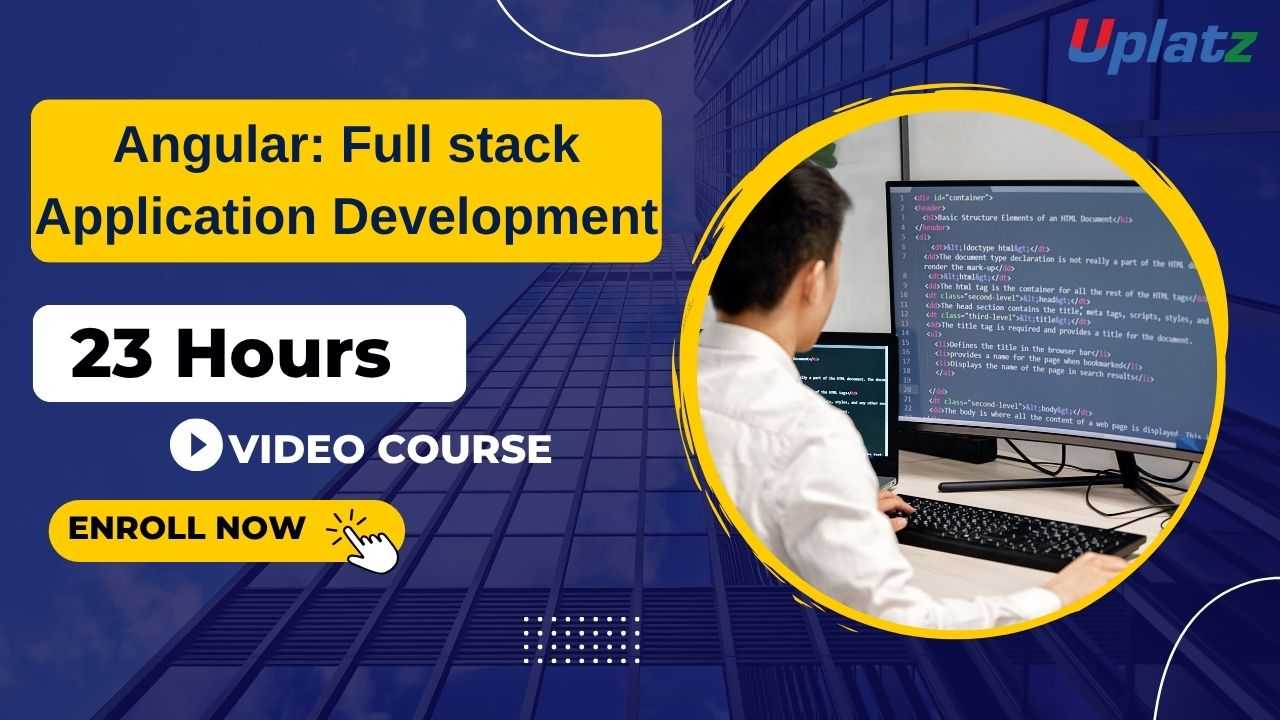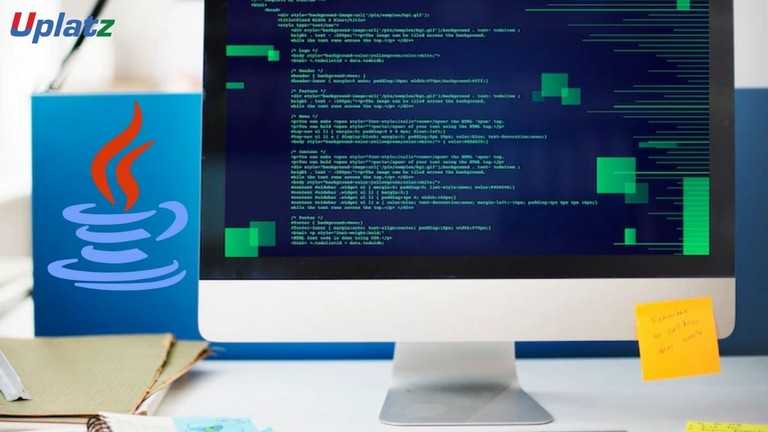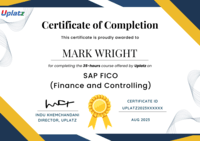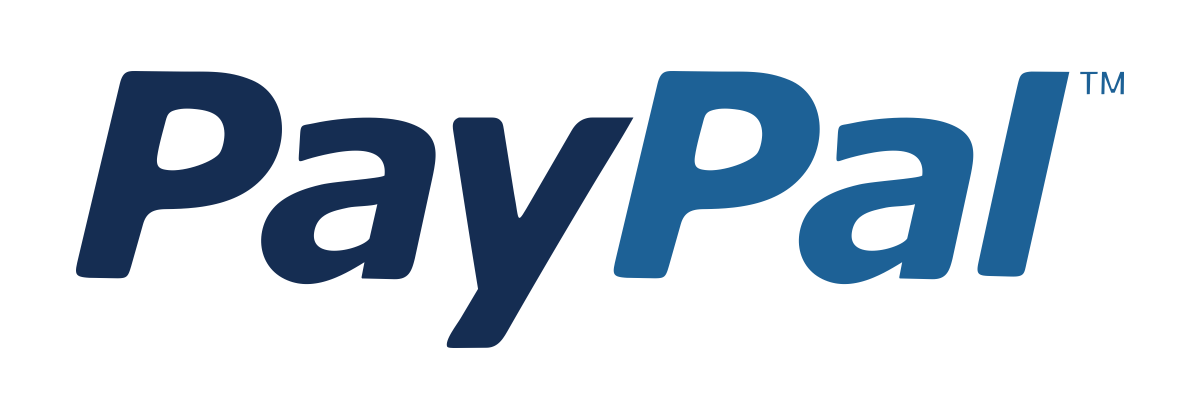Swift
Learn Swift Programming to Build Robust iOS, macOS, and Cross-Platform Applications with Apple's Powerful Language
Course Duration: 10 Hours
Price Match Guarantee
Full Lifetime Access
Access on any Device
Technical Support
Secure Checkout
Course Completion Certificate
 93% Started a new career
BUY THIS COURSE (
93% Started a new career
BUY THIS COURSE (USD 12 USD 41 )-
 88% Got a pay increase and promotion
88% Got a pay increase and promotion
New & Hot
Cutting-edge
Job-oriented
Coming Soon
Students also bought -
-

- Angular: Full-Stack Application Development
- 23 Hours
- USD 12
- 1249 Learners
-
- JavaScript - Mastering Modern Web Development with Advanced Frameworks
- 15 Hours
- USD 12
- 648 Learners
-

- Java Programming (advanced)
- 10 Hours
- USD 12
- 316 Learners

Swift - Build iOS Apps, Master Apple’s Modern Programming Language – Self-Paced Online Course
Swift is Apple’s modern, open-source programming language designed to make coding more powerful and approachable for developers building applications across the entire Apple ecosystem—including iOS, macOS, watchOS, and tvOS. This comprehensive self-paced course is tailored for beginners and intermediate developers who want to master Swift and learn how to build scalable, high-performance applications for Apple devices. The course starts by introducing you to the fundamentals of Swift programming. You’ll begin with variables, constants, data types, control flow, and functions—essential building blocks of the language. These are paired with Swift’s unique safety features, such as optionals and type inference, which help prevent common programming errors and promote writing clean, reliable code. Each concept is explained through hands-on coding exercises, mini-projects, and guided labs that reinforce your learning and build your confidence in real-world applications.
As you advance, the course covers object-oriented programming (OOP) and protocol-oriented programming (POP), two essential paradigms in Swift development. You’ll explore the use of classes, structs, enums, protocols, and extensions, and learn how to architect applications that are modular, reusable, and easy to scale. Since Swift emphasizes protocol-oriented design, you’ll see how this approach can simplify code and increase flexibility across your app components. The course also teaches memory management using Automatic Reference Counting (ARC) and covers Swift’s built-in error handling tools like the do-try-catch model, ensuring that your applications are both efficient and secure.
Once you've built a strong programming foundation, you'll transition into actual application development using Xcode, Apple’s official Integrated Development Environment (IDE). Here, you’ll learn to build user interfaces with both UIKit and SwiftUI. UIKit is Apple’s traditional, imperative UI framework, while SwiftUI is the newer, declarative framework that allows for cleaner, more intuitive UI development. You’ll design dynamic views, handle user interaction, manage app states, and implement navigation. The course gives special attention to SwiftUI’s strengths—such as real-time previews, data bindings, and concise syntax—which dramatically accelerate the development process.
Beyond UI development, you’ll gain expertise in data management and persistence. The course explores how to store and retrieve data using UserDefaults, the Codable protocol, and Core Data. You’ll also learn how to connect your apps to the internet using URLSession to make RESTful API calls and parse JSON responses—enabling the creation of data-driven apps that interact with live services and backends. Handling background processes is equally essential, so you'll learn to manage asynchronous operations using Grand Central Dispatch (GCD), closures, completion handlers, and Swift’s modern async/await syntax, introduced in Swift 5.5, to keep apps responsive and efficient under all workloads.
Error detection and debugging are essential components of any development process. You’ll learn to troubleshoot Swift applications using Xcode’s debugging tools, track performance issues with Instruments, and write unit tests to ensure your code behaves correctly. You'll also be introduced to Test-Driven Development (TDD) and performance profiling, so your applications are not only functional but also robust and optimized.
To simulate real-world development, the course features multiple capstone projects that span diverse industries and use cases—such as weather apps, to-do lists, budgeting tools, and social media prototypes. Each project walks you through the complete development cycle—from idea to deployment—giving you a chance to apply your skills in practical settings. These projects are also ideal for building a professional portfolio to present to future employers or freelance clients.
You'll also gain a deep understanding of software architecture patterns widely used in iOS development, including MVC (Model-View-Controller) and MVVM (Model-View-ViewModel). These patterns help organize your code effectively, making it easier to maintain, test, and scale. Best practices in code organization, naming conventions, and modularization are reinforced throughout the course, so you’re writing professional, production-ready code from day one.
By the end of this course, you will be able to design, build, and deploy full-featured iOS applications. You’ll be capable of creating custom UIs, managing local and remote data, implementing animations, integrating with third-party APIs, and structuring your apps using clean, scalable architecture. Whether you want to publish your own app to the App Store or apply for jobs as an iOS Developer, Swift Developer, or Mobile Software Engineer, this course provides you with the skills and confidence to succeed.
Beyond technical training, the course provides support for your career growth. You’ll find sections dedicated to interview preparation, common Swift coding challenges, and how to prepare your app for App Store submission. You’ll also enjoy lifetime access to all materials, future updates, and ongoing support from expert mentors and the learning community.
Whether you’re a beginner aiming to break into app development, a student exploring a tech career, or an experienced developer looking to master Apple technologies, this Swift course delivers a thorough, hands-on, and industry-aligned learning experience. With Swift expanding into macOS, watchOS, server-side programming, and beyond, learning Swift now positions you for long-term success in a mobile-first, Apple-driven development world.
Course Objectives Back to Top
This course is designed to provide learners with a thorough understanding of Swift programming and progressively build toward professional iOS and macOS app development. Through a hands-on, project-based approach, learners will gain practical, real-world skills that can be immediately applied in mobile and software development environments.
By the end of this course, learners will be able to:
- Understand and apply the core syntax and programming principles of Swift, including variables, constants, data types, functions, and control flow.
- Use object-oriented and protocol-oriented programming to build modular and reusable Swift code.
- Develop user interfaces using both UIKit and SwiftUI, enabling compatibility with legacy apps and the latest iOS development practices.
- Manage application state, user input, and view hierarchy to create dynamic and responsive app experiences.
- Integrate networking capabilities into Swift applications using URLSession and parse data using the Codable protocol.
- Store and manage data using Core Data, UserDefaults, and other iOS data persistence techniques.
- Perform asynchronous operations using Grand Central Dispatch (GCD), closures, and Swift's modern async/await syntax.
- Write, run, and debug code efficiently using Xcode’s built-in tools, including Instruments for performance monitoring.
- Build and deploy complete, real-world iOS applications using clean architecture patterns like MVC and MVVM.
- Conduct unit testing and follow test-driven development (TDD) methodologies to ensure software reliability.
- Prepare Swift-based applications for App Store submission, understanding provisioning, signing, and deployment workflows.
- Build a portfolio of apps that demonstrates professional competence in Swift and iOS development.
- Gain foundational knowledge that supports interview preparation, certification goals, and job-readiness in Swift-related roles.
Course Syllabus Back to Top
Swift Programming and iOS App Development – Course Syllabus
Module 1: Introduction to Swift and Development Environment
- Overview of Swift and its role in iOS/macOS development
- Installing and configuring Xcode
- Introduction to the iOS SDK and Apple Developer tools
- Your first Swift playground – exploring basic syntax
- Xcode interface and project structure
Module 2: Swift Fundamentals
- Constants, variables, and data types
- Operators, expressions, and string interpolation
- Control flow: if, switch, for, and while
- Functions and parameters
- Optionals and unwrapping values
Module 3: Collections and Advanced Data Types
- Arrays, dictionaries, and sets
- Enumerations and associated values
- Tuples and type aliases
- Working with closures and higher-order functions
Module 4: Object-Oriented and Protocol-Oriented Programming
- Classes, structs, and the differences between them
- Inheritance and polymorphism
- Protocols and protocol conformance
- Extensions and protocol-oriented design
- Access control and encapsulation
Module 5: UIKit Essentials and View Controller Lifecycle
- Introduction to UIKit framework
- Views, view hierarchies, and layout fundamentals
- ViewController lifecycle and navigation
- Working with Storyboards and Auto Layout
- Handling user input and gestures
Module 6: SwiftUI for Declarative UI Design
- SwiftUI overview and comparison with UIKit
- Building interfaces with Views and Modifiers
- Stacks, Grids, and Containers
- Binding, @State, and data-driven UI updates
- Navigation, lists, and tab views in SwiftUI
Module 7: Managing App State and User Interaction
- View and state management in UIKit and SwiftUI
- Delegates, notifications, and observers
- Handling form input and validation
- Keyboard management and dynamic interface adjustments
- Modal presentation and navigation patterns
Module 8: Networking and APIs in Swift
- Introduction to networking and RESTful APIs
- Making HTTP requests with URLSession
- Parsing JSON with Codable and Decodable
- Error handling and retry mechanisms
- Building a network layer and data service abstraction
Module 9: Data Persistence and Local Storage
- Using UserDefaults for simple data storage
- Introduction to Core Data and data modeling
- Performing CRUD operations with Core Data
- Using FileManager for file-based storage
- Local caching strategies and performance considerations
Module 10: Asynchronous Programming and Concurrency
- Understanding asynchronous execution
- Using Grand Central Dispatch (GCD)
- Writing concurrent code with DispatchQueue
- Closures and escaping functions
- Modern concurrency with async/await and structured concurrency
Module 11: Testing, Debugging, and Optimization
- Unit testing with XCTest
- Writing testable code and test-driven development (TDD)
- UI testing and automated test flows
- Debugging with breakpoints, LLDB, and the Xcode Debug Navigator
- Using Instruments to monitor performance and memory usage
Module 12: Final Projects and App Deployment
- Applying MVC, MVVM, and other architecture patterns
- Building and polishing real-world apps
- App Store preparation: provisioning, signing, and certificates
- App submission and review guidelines
- Showcasing your apps in a professional portfolio
- Interview prep: common Swift/iOS questions and assessments
🎓 Capstone Projects & Portfolio Development
-
Design and develop 2–3 fully functional iOS apps from scratch
-
Document code, architecture decisions, and testing strategies
-
Present your apps with professional UI/UX and submit to GitHub or App Store
Certification Back to Top
Upon successful completion of the Swift course, learners will receive a Certificate of Completion from Uplatz, validating their skills in Swift programming and iOS app development.
This certification confirms your ability to write efficient Swift code, build feature-rich iOS applications, and understand the full lifecycle of Apple app development. It serves as an excellent addition to your professional portfolio and can support job applications for roles in mobile and software development.
While not an official Apple certification, this course lays the groundwork for further certifications such as the Apple Certified iOS Developer badge and supports your preparation for job-based assessments in Swift and iOS roles.
Career & Jobs Back to Top
Proficiency in Swift can open doors to various career paths in the Apple development ecosystem and beyond. Roles requiring Swift expertise include:
- iOS Developer
- Swift Developer
- Mobile App Developer
- macOS Developer
- Frontend Engineer (SwiftUI)
- Software Engineer – Apple Platforms
- WatchOS or tvOS Developer
- App Store Publisher
Swift developers are in high demand across startups, digital agencies, and tech giants who need robust, scalable apps for Apple devices. Companies in industries like finance, health tech, e-commerce, media, and education frequently hire Swift developers to expand their mobile offerings.
Interview Questions Back to Top
- What is Swift?
Swift is a powerful and intuitive programming language developed by Apple for iOS, macOS, watchOS, and tvOS development. - How is Swift different from Objective-C?
Swift is safer, more concise, easier to read, and has better memory management compared to Objective-C. It supports modern programming paradigms and better tooling. - What are optionals in Swift?
Optionals represent variables that may or may not contain a value. They help prevent runtime crashes by handling nullability safely. - What is the difference between struct and class in Swift?
Structs are value types and copied on assignment, while classes are reference types and share references. Structs are preferred for immutable data. - What is ARC in Swift?
ARC (Automatic Reference Counting) automatically manages memory by keeping track of strong references and deallocating unused objects. - What is the use of protocols in Swift?
Protocols define blueprints of methods or properties and enable protocol-oriented programming, promoting code reuse and abstraction. - How do you handle asynchronous tasks in Swift?
Using Grand Central Dispatch (GCD), closures, completion handlers, or async/await introduced in Swift 5.5. - What are some common architecture patterns used in iOS apps?
MVC (Model-View-Controller), MVVM (Model-View-ViewModel), and VIPER are commonly used to structure iOS apps. - What is SwiftUI?
SwiftUI is a declarative UI framework introduced by Apple that allows developers to build user interfaces for all Apple platforms using Swift. - How do you consume REST APIs in Swift?
By using URLSession to create requests, handle responses, and parse JSON data using Codable models.
Course Quiz Back to Top
FAQs
Back to Top









